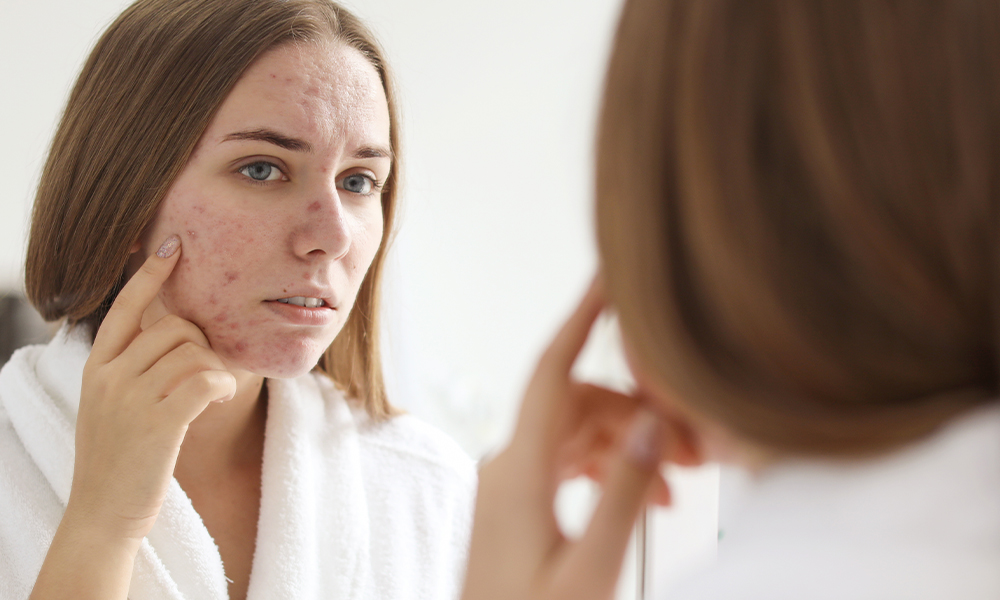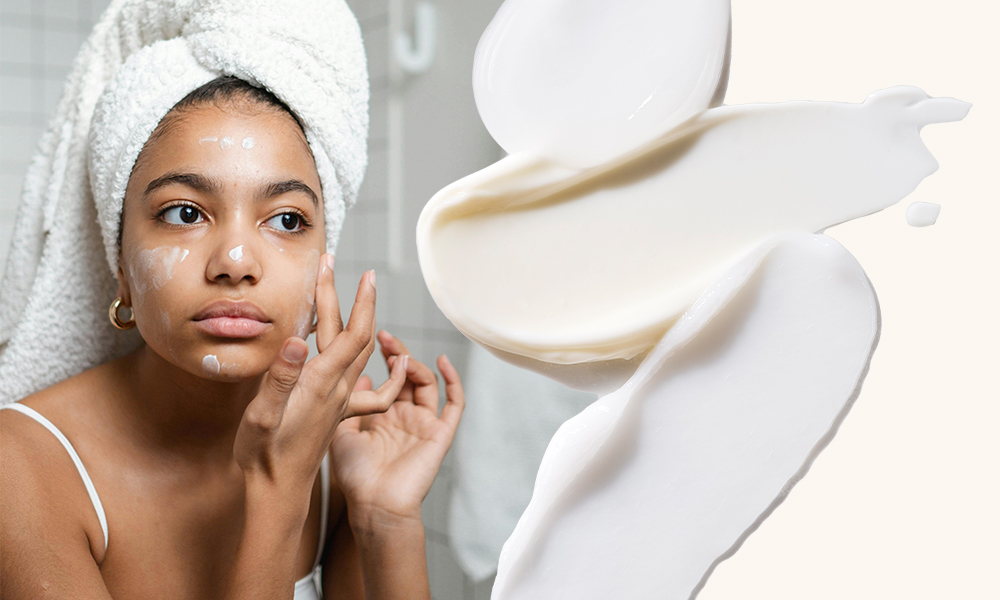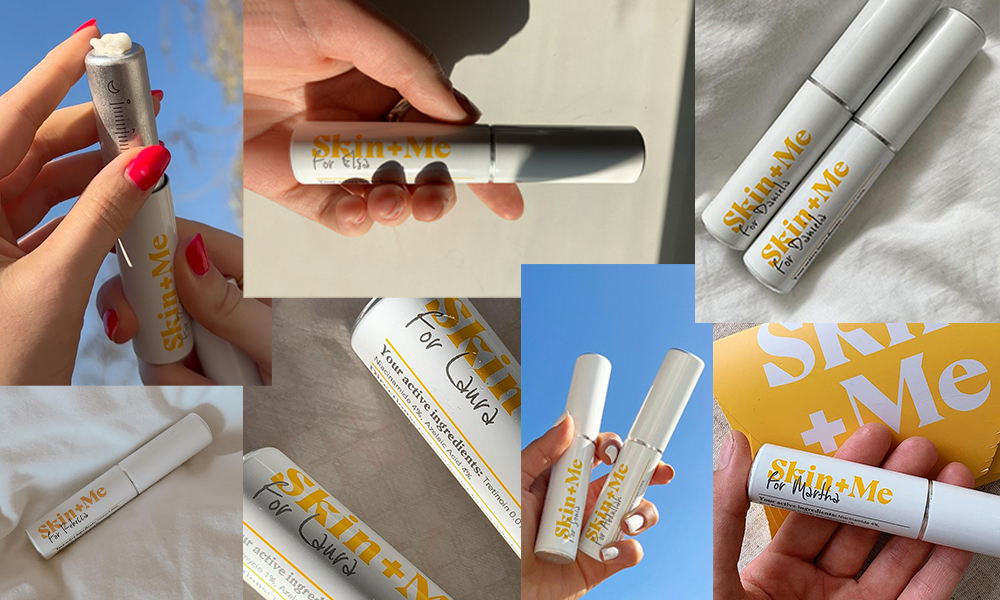Ask A Dermatologist: Do I Have Acne Or Rosacea?

Link to share article here:
Everything You Need To Know About Blackheads
Is there anything more frustrating than a patch of blackheads? They might be small, but the dark dots on your skin are notoriously stubborn. And, even though you’re probably the only person who notices them, they can be tricky to get rid of.
But what actually are blackheads, and how can you minimise their appearance while still keeping your skin soft and hydrated? We asked Dr Jason Thomson, Head of Medical at Skin + Me, for his expert advice.
What are blackheads?
Most people will have experienced blackheads at some point in their lives – they’re very common in our teenage years, but many people get them during their adult years too. “Blackheads are small, black bumps that appear on the skin,” Dr Jason tells us. “They usually form on areas where the skin has lots of hair follicles and oil glands which is why the face, and in particular the nose, is where you’ll most often find them.” However, blackheads can also appear on your back, neck, chest, arms and shoulders.
“Blackheads are also known as open comedones and are caused by a buildup of dead skin cells and oil, which is called sebum,” Dr Jason continues. “It blocks the top of the hair follicle opening (called a pore), resulting in it dilating. The black colour results from the blocked oil and dead skin oxidising.”
Blackheads and whiteheads have some similarities, but the key difference between whiteheads and blackheads is that plugged follicles can be open or closed. Open follicles appear as blackheads, while closed pores (also known as comedones) are usually whiteheads. Whiteheads look like tiny white bumps under the skin.
What causes blackheads?
Both blackheads and whiteheads are caused because the hair follicles become irritated by a build-up of dead skin cells that aren’t shedding quick enough. This can often be exacerbated by the buildup of the propionibacterium acnes bacteria on the skin or hormonal changes – such as adolescence, menstrual cycles or the menopause – that are difficult to control. Common causes of blocked pores include comedogenic (pore-blocking) moisturisers, makeup (containing silicons), hair products or touching your face. “Blackheads and whiteheads are considered mild forms of acne,” says Dr Jason. “Blackheads are not caused by dirt or poor hygiene and cannot be washed away.”
What are sebaceous filaments?
“It’s worth pointing out that blackheads are different to sebaceous filaments and the two are often confused with one another,” Dr Jason notes. “Sebaceous filaments are normal structures in the skin and line the inside of the hair follicle and help to remove sebum from the sebaceous glands to the surface of the skin. They look like grey dots on the skin’s surface and they’re often more prominent in those with oiler skin types. They’re part of normal, healthy skin and best left alone.”
Can you get rid of blackheads?
Our Dermatology Team also advises against squeezing blackheads, as this can cause problems further down the line. “Although it’s tempting to squeeze blackheads it’s advisable not to as you risk squeezing the contents of the follicle deeper into the skin and introducing bacteria into the follicle which can result in inflammation and long-term scarring,” Dr Jason explains.
Blackhead strips are popular, but our experts warn that they’re too abrasive and can damage the skin barrier. As you rip the blackheads out, you also risk pulling off the top level of the skin, leaving it feeling raw and exposed.
If you want to manually remove the contents of your blackheads then the best option is going to a professional clinic. “Dermatologists and aesthetic doctors can use sterile tools called comedone extractors to effectively remove blackheads, particularly large, deep ones so it’s best to go to a professional if you’re looking to treat these,” says Dr Jason. However, this won’t prevent your pores from filling back up. You have to repeat the treatments over time to maintain the same effect, and this can become time consuming and expensive.
That’s why we’d recommend a consistent skincare regime that targets your blackheads. You might see some improvements through using AHAs, BHAs, glycolic acid and salicylic acid. However, you’ll likely get the best results from using active ingredients like azelaic acid and retinoids.
Active ingredients to target blackheads
Azelaic acid is a naturally-occurring acid produced by yeast that lives on the skin, and it is also found in grains such as barley, wheat and rye. It is an antioxidant with anti-inflammatory and anti-bacterial properties, which helps to clear pores and reduce irritation. This makes it a great choice for anyone who wants to gently reduce the appearance of blackheads.
Tretinoin is part of the retinoid family, a group of synthetic and naturally-occurring compounds derived from Vitamin A. It works directly on the retinoic acid receptors found on your skin cells, making it the most powerful retinoid available. Tretinoin stimulates cell renewal and speeds up the removal of dead cells and debris that can block pores – this makes it an excellent treatment for blackheads and other forms of acne.
At Skin + Me, your very own pharmacist clinician will personally review your consultation form and photos to create a bespoke treatment just for you. Packed with the best active ingredients for your skin, your custom formulation can help keep blackheads and whiteheads at bay.
The bottom line
Blackheads are small and harmless but we understand if you want to minimise their appearance. Manual extractions can clear blackheads for a time, but an efficient skincare routine can help to keep them at bay in the long term.
New to Skin + Me? Get your first month of personalised skincare for £4.99 with promo code DOSE – complete our quick consultation here.
Looking for a routine refresh? Add the Dream Routine to your Skin + Me subscription.
In need of a restock? Head to The Skincare Shop for one-off purchases of your Routine Essentials.



